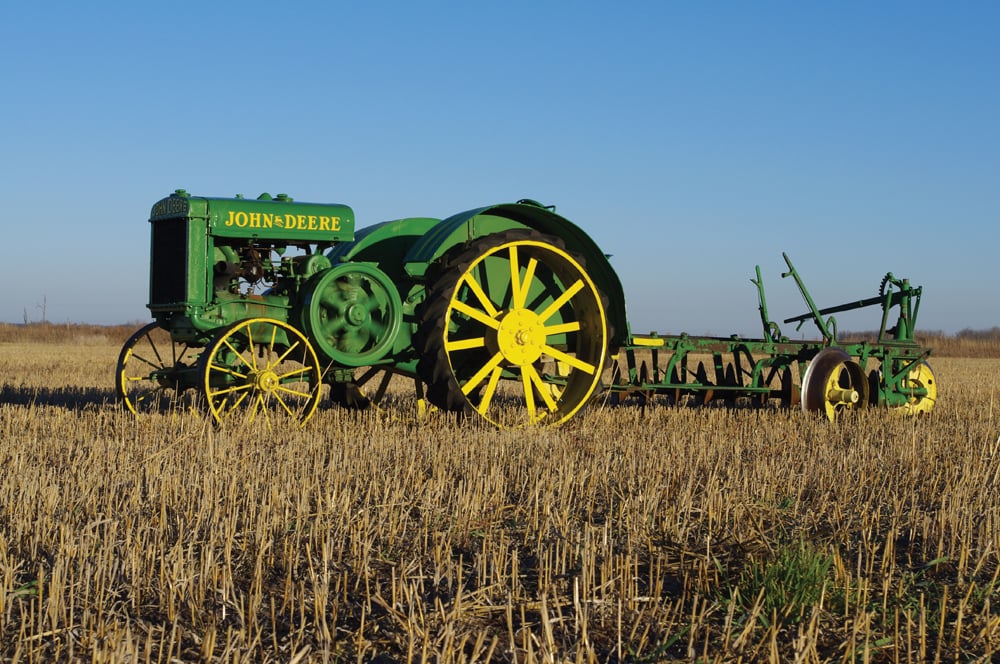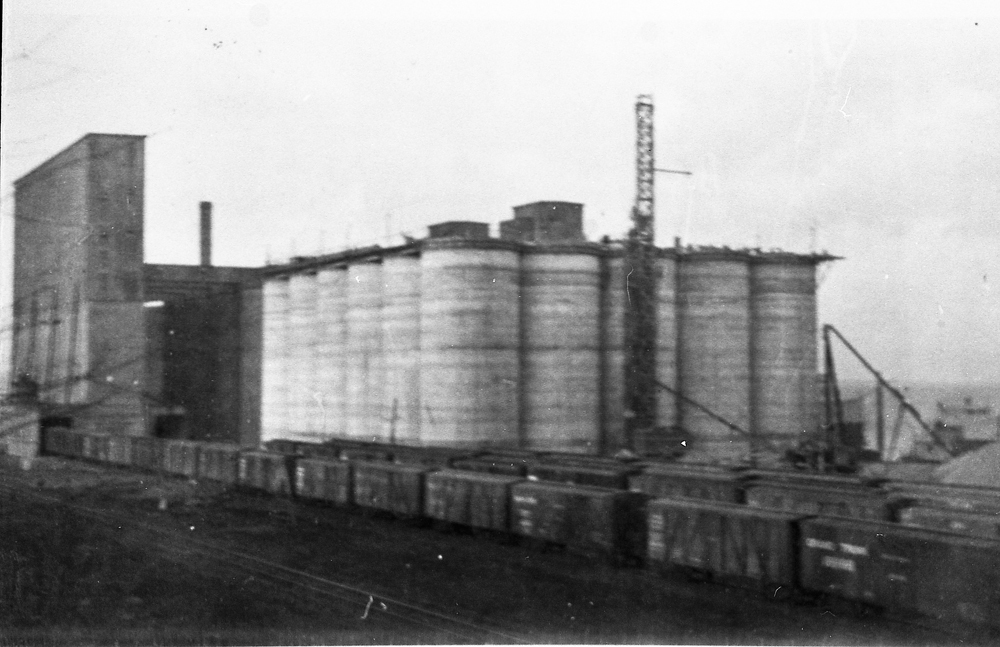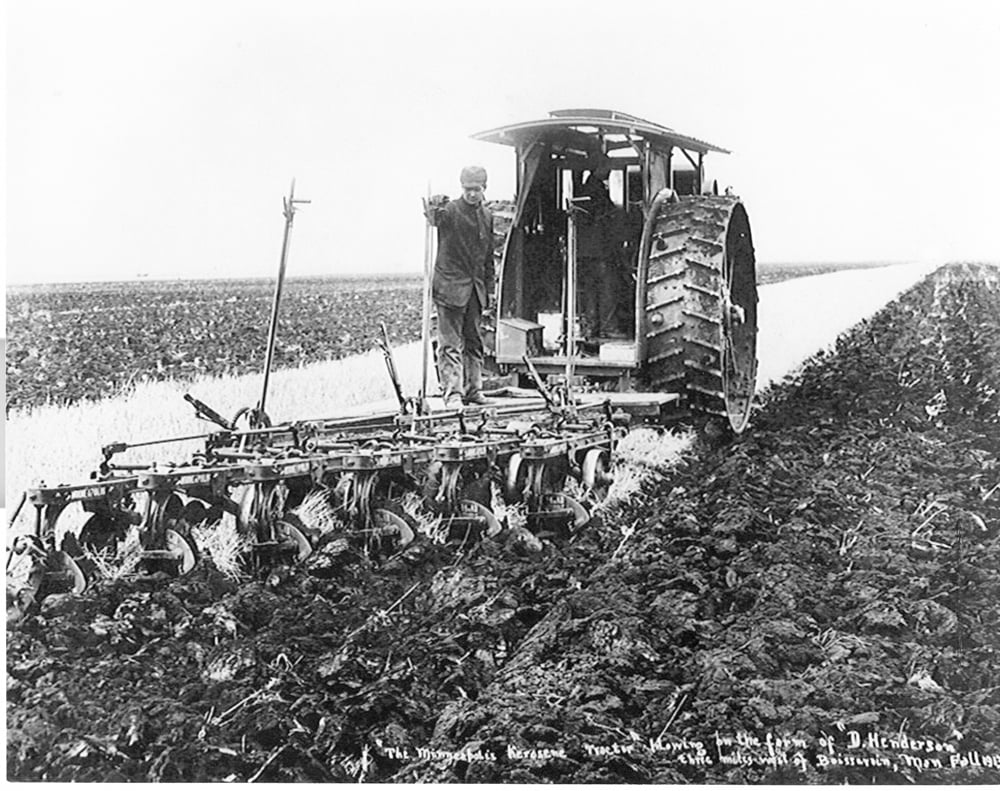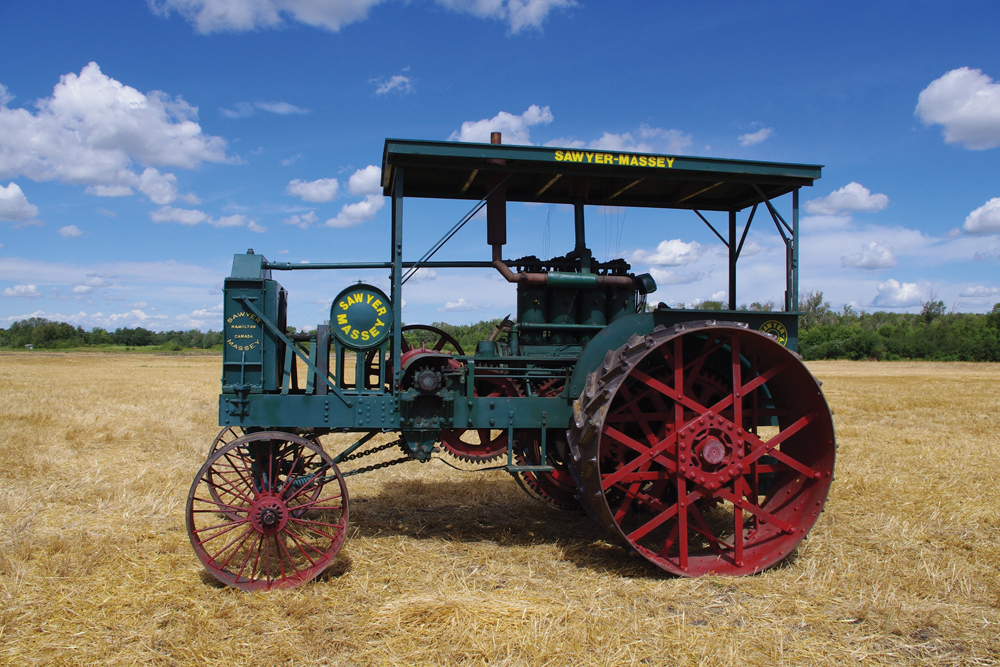The Manitoba Agricultural Museum has a number of John Deere Model D tractors in its collection ranging from a “spoker” Model D to late-model-styled Ds.
John Deere built Model Ds over an astonishing production run of almost 30 years, beginning in 1924 and ending in 1953. After assembly line production had ceased, there were still orders coming in for Model Ds so John Deere built a number of Ds in late 1953 on a street behind its tractor plant, using D parts the company had in stock. Production of Ds totalled 159,083.
Read Also
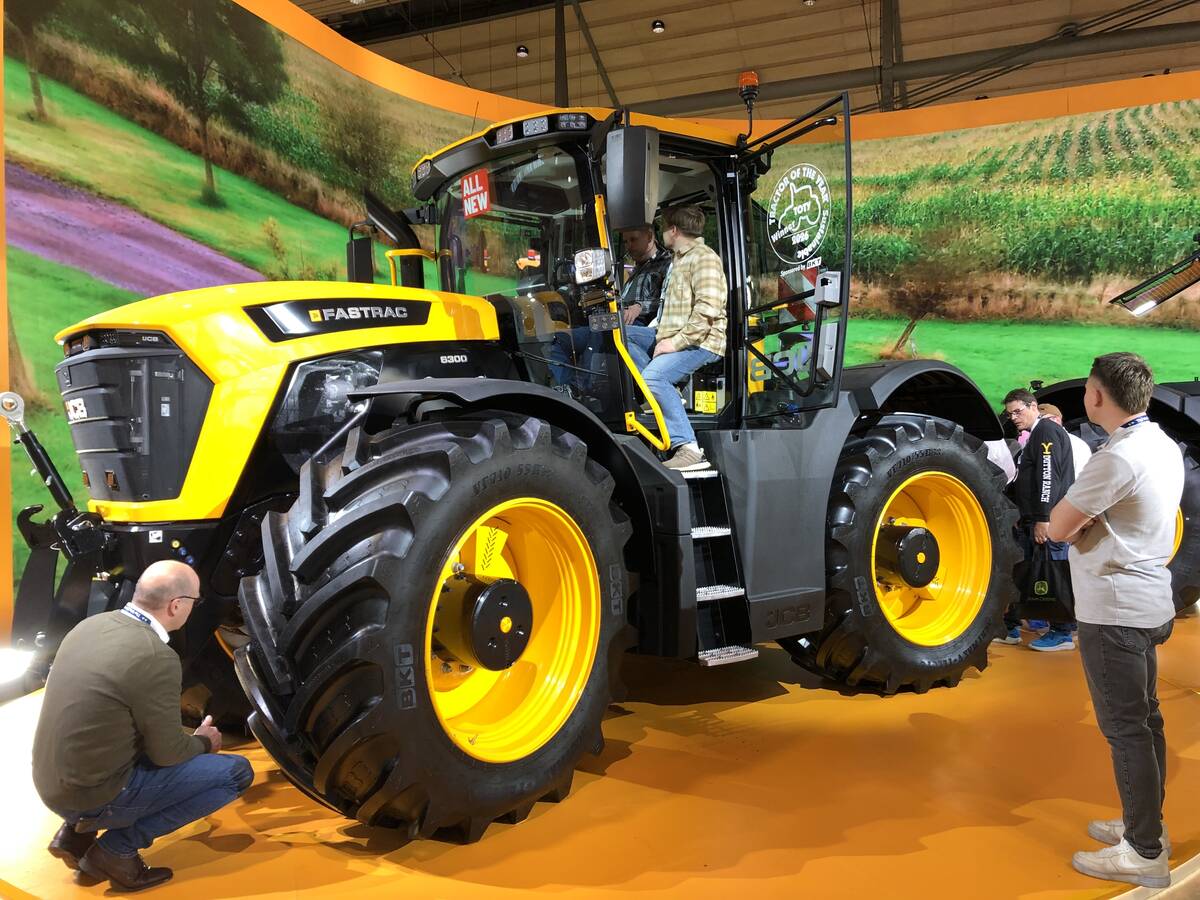
VIDEO: JCB adds new 6000 series Fastrac tractors
JCB had its latest Fastrac tractors in its new 6000 series at Agritechnica 2025 in Hanover, Germany. One of the models won a ‘Tractor of the Year’ award for sustainability.
The “spoker” John Deere Model D tractor in our collection was donated to the museum in 1961 by Dan Campbell of Chater, Manitoba. He purchased the tractor used in 1927 from the John Deere dealer in Brandon.
When the tractor was new, it had been purchased by a Mr. Spears who farmed at Alexander, who traded it for a new tractor in 1927. The tractor was used for field work on the Campbell farm such as plowing and harrowing, however, draft horses were still used for other work such as seeding and cutting hay.
Dan Campbell, along with his brothers who also farmed in the Chater area, operated a steam threshing outfit until 1939. After that date, Dan operated his own threshing machine, a 24-inch Woods Brothers machine, using the D to power it. In 1942, the tractor was rebuilt with a newer block featuring 6.75-inch-diameter cylinders, new rings and valves. The tractor from the factory had a 6.5-inch bore block. The original Dixie magneto was replaced with a Wico magneto as the Dixie was worn out.
In 1947, Dan Campbell purchased a new D and the 1925 D was relegated to secondary duties such as harrowing and belt work. By 1957, the tractor was out of use on the farm. After a period of inactivity, it was donated by Campbell, who was involved with the Manitoba Agricultural Museum almost from the very start. He served as a director in 1953.
The design featured a simple two-cylinder engine with pressure lubrication, a one-piece transmission case featuring two forward speeds originally and transmission gears that are substantial, to say the least.
Over the course of production various changes and updates to the D design were made. The first Ds came equipped with an open spoke flywheel and these early tractors came to be known as “spoker” Ds. By 1925 solid “disc” flywheels were being installed as the spoked flywheels were prone to cracking. As production of Ds continued, improvements were made such as power takeoffs, an updated transmission with three forward speeds, rubber tires, oil filters and updated steering gear.
In 1939 John Deere introduced styled bodywork and fenders which made the later Ds look significantly different from the unstyled Ds. However, under the tin, they were largely the same from a mechanical point of view. The last Ds built could be ordered with electric starting, electric lights and hydraulics.
John Deere claimed that the two-cylinder engine design made possible a short, properly heated manifold with both cylinders equidistant from the carburetor. The gasified fuel travelled only a few inches, each cylinder received the same charge, with combustion taking place immediately after the cylinder was charged. This meant there was no chance for the fuel to reliquefy. The Model “D” could successfully burn low-cost fuels such as distillate, furnace oil, fuel oil, Turner Valley naphtha, some grades of diesel oil, and other money-saving fuels as well as gasoline or kerosene. When burning these fuels the tractor would be started on gasoline, warmed up and then switched over to the low-cost fuel. The gas tank featured two compartments, a small one for gas and a large compartment for kerosene or low-cost fuel. A three-way valve could switch between tanks as well as featuring an off position. Usually to shut the tractor down the operator just turned the valve to the off position and let the tractor run out of fuel, draining the carburetor in preparation for starting on gas.
John Deere further claimed, to help in the combustion of low-cost fuels, the relatively slow-speed, two-cylinder engine allowed more time for the complete combustion of these heavier, slower-burning fuels. The combination of short, hot manifold with the gasified fuel travelling the same distance to each cylinder, and slower engine speed also reduced harmful oil dilution in a John Deere Model “D” tractor when burning low-cost fuels, resulting in far longer life of all engine parts.
Apparently some Ds in southern Alberta and Montana even burned light sweet crude oil for fuel. When burning this fuel, a different manifold was used with the exhaust coming out on the right side of the tractor, not the left side. This manifold design was hotter than the standard manifold and better vaporized the crude oil. It, apparently, was common practice when burning crude oil to drain excess oil out of the crankcase at the end of the day. Not all the crude oil was burnt in the cylinders and the unburnt “ends” were wiped off the cylinder walls and swept into the crankcase by the piston rings.
In the view of many tractor fans, John Deere hit a home run with the D and made the company a player in the tractor business.
The 175th anniversary of John Deere is 2017 and in celebration, the 2017 Threshermen’s Reunion and Stampede features John Deere as the Expo Feature. As well as the John Deere machinery in the museum collection, we are expecting a wide selection of John Deere machinery from outside collectors to appear at the John Deere Expo.
The John Deere collector group is quite strong with a number of outstanding pieces in the collections. If you are interested in bringing a John Deere to the 2017 reunion, watch the Threshermen’s Reunion and Stampede website as it will shortly feature a page with information useful to collectors planning to bring pieces to the expo as well as registration forms.

